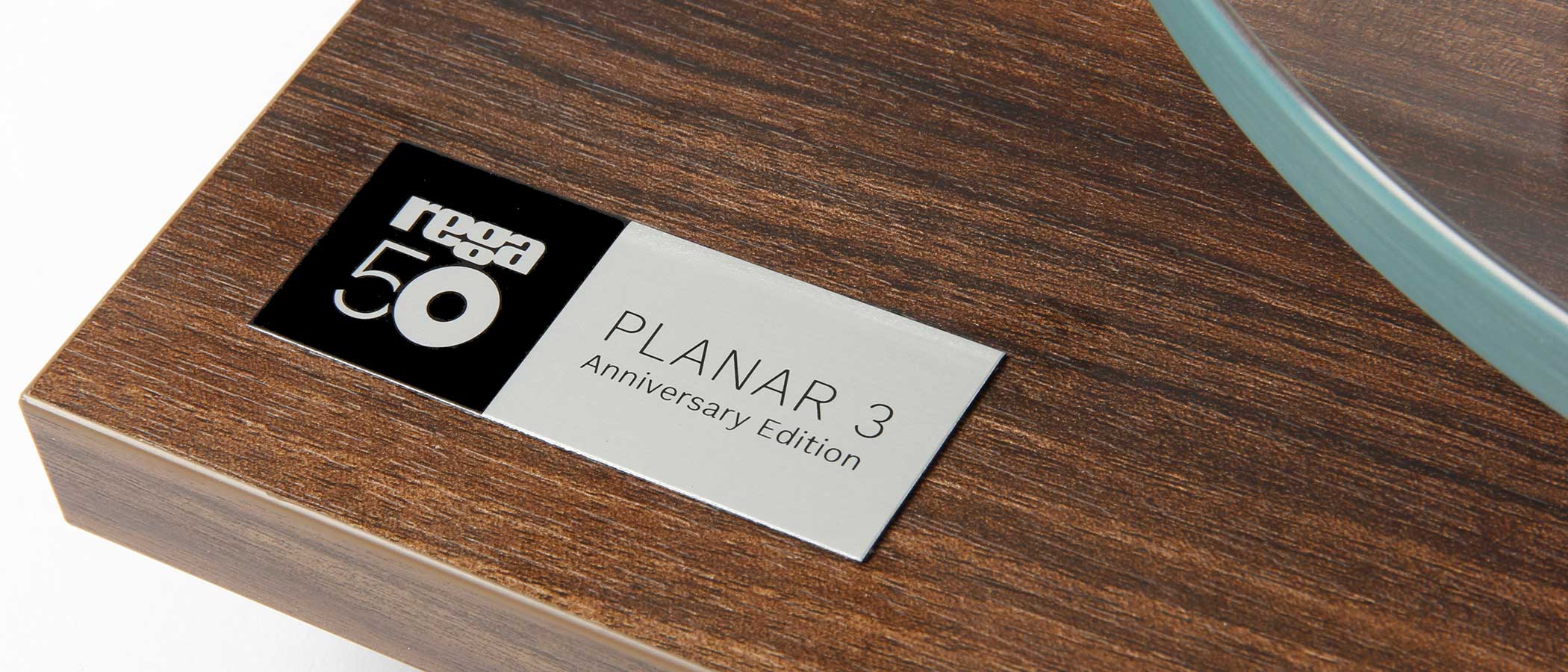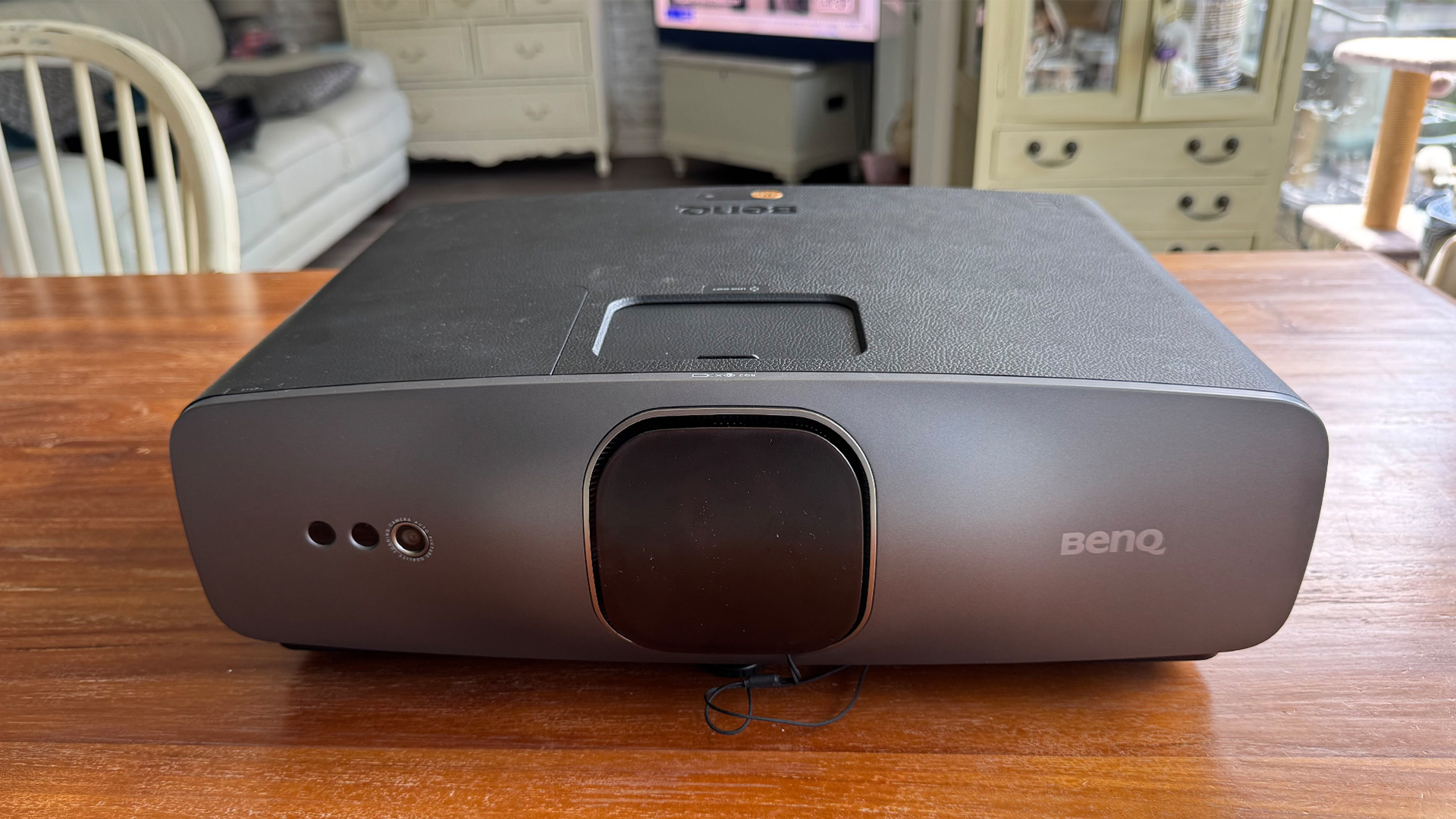Sound+Image Verdict
It’s a no brainer, the 50th anniversary Rega Planar 3. Useful upgrades for not much more, and simply wonderful vinyl replay in every regard.
Pros
- +
A classic made more classic
- +
Useful upgrades
- +
Fantastic sound
Cons
- -
Thin lid hinges can slip out
Why you can trust What Hi-Fi?
Happy birthday Rega. It’s 50 years, a bit more by the time you read this, since Roy Gandy and Tony Relph each put a thousand pounds into a pot and officially formed Rega Research Ltd on 1 July 1973.
It was a good plan, at the right time. Relph already owned two hi-fi shops down in Southend-on-Sea, and this was a time when “on Saturday when we opened there was a queue… People wanted to throw money at you to buy hi-fi”.
Gandy, meanwhile, had been round to Relph’s shops and others selling his first turntable design, The Planet, developed and hand-built as a side project while Gandy was working as a technical writer for Ford Motor Company.
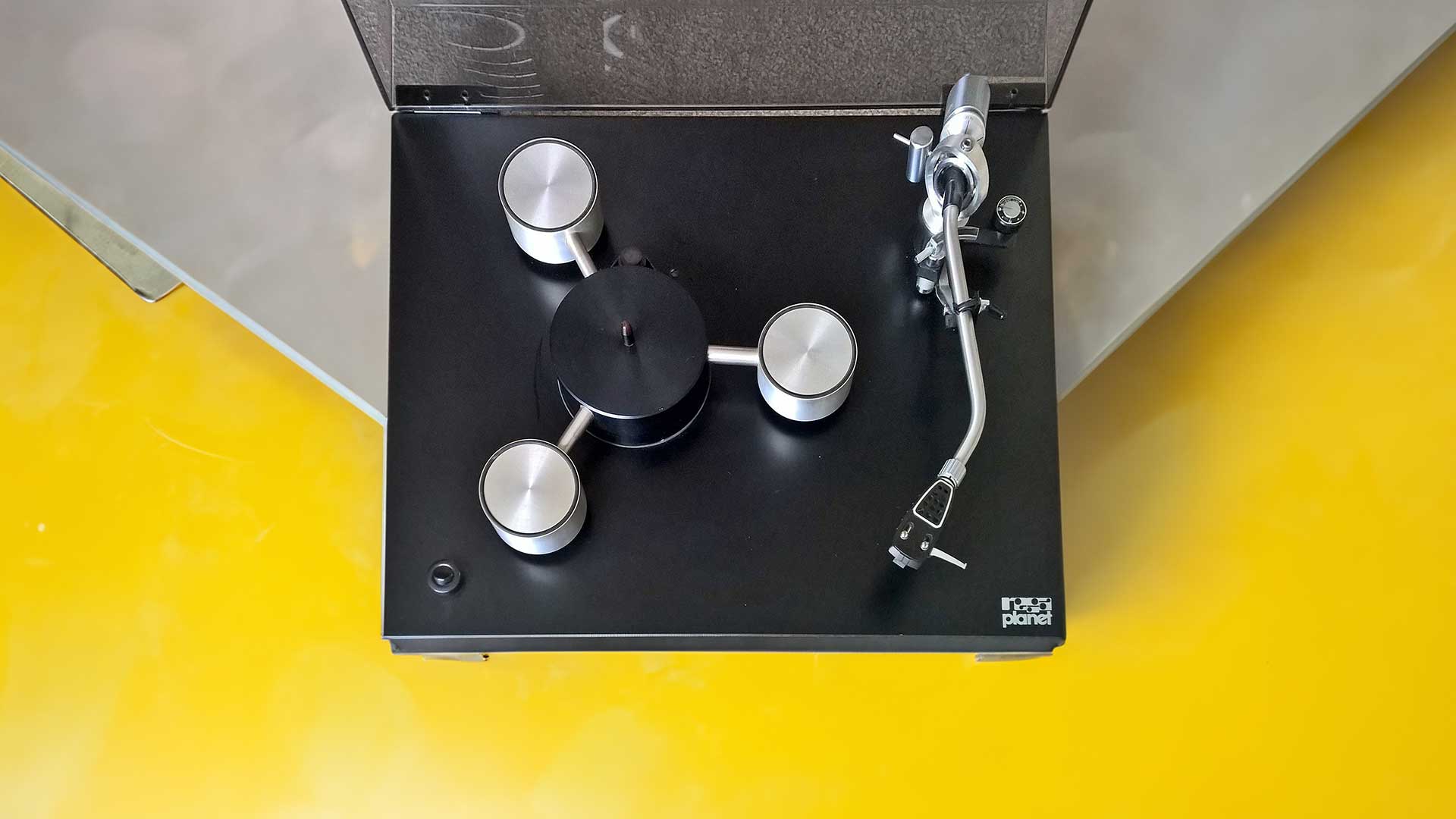
‘The Planet’ was so called because instead of a solid platter it had three circular supports rotating like moons around a central ‘planet’, a design curious enough to sell sufficiently for Relph to suggest an expansion into the joint venture.
As the new company increased production and acquired measuring equipment, the limitations of this skeletal support were realised, and Gandy decided that a glass platter might be the solution. From the tale told in Rega’s chunky history book A Vibration Measuring Machine, Gandy was outstandingly lucky to meet Clifford Rankin of Rankin Glass, who seems to have dived into the project with a bare minimum of business guarantees, and whose high-precision platters made possible Rega’s next generation of turntables – the Planars.
That is not to underplay Gandy’s engineering of the whole machine, and his ongoing development of Rega’s low-mass philosophy.
Other turntables of the time (and today) offered large and solid plinths and platters, with the thinking that high mass will create rigidity; it assists speed stability, while lowering and spreading resonances.
That was never the Rega way. Rigidity yes, but not through piling on weight. Mass absorbs energy, says Rega. Slowly-released energy adds coloration, and lost energy equals lost music. For Roy Gandy [who, for declaration’s sake, once put this reviewer up in his castle-like residence overnight before an extensive factory tour] it’s all about stiffness and bracing and lightness.
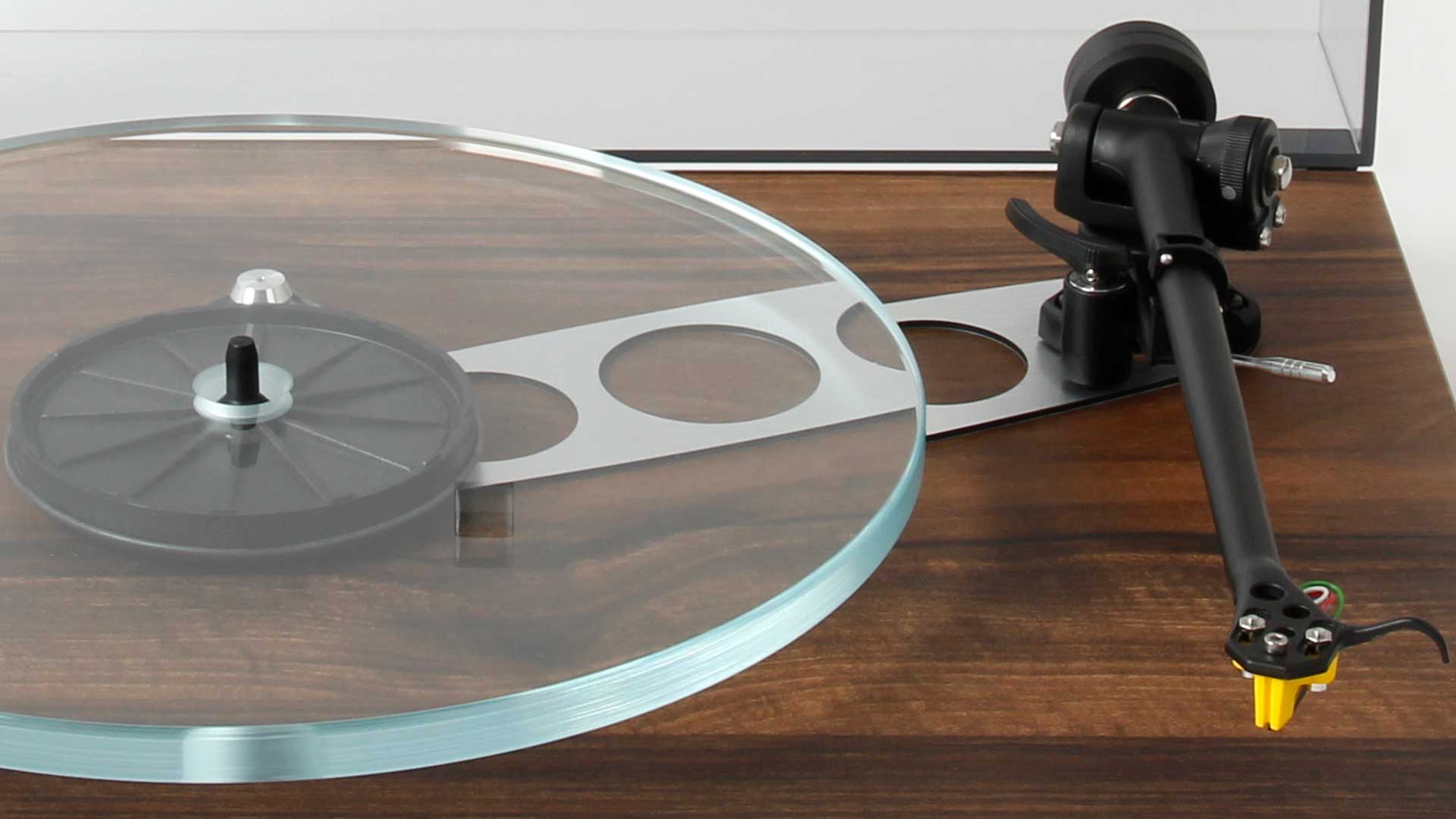
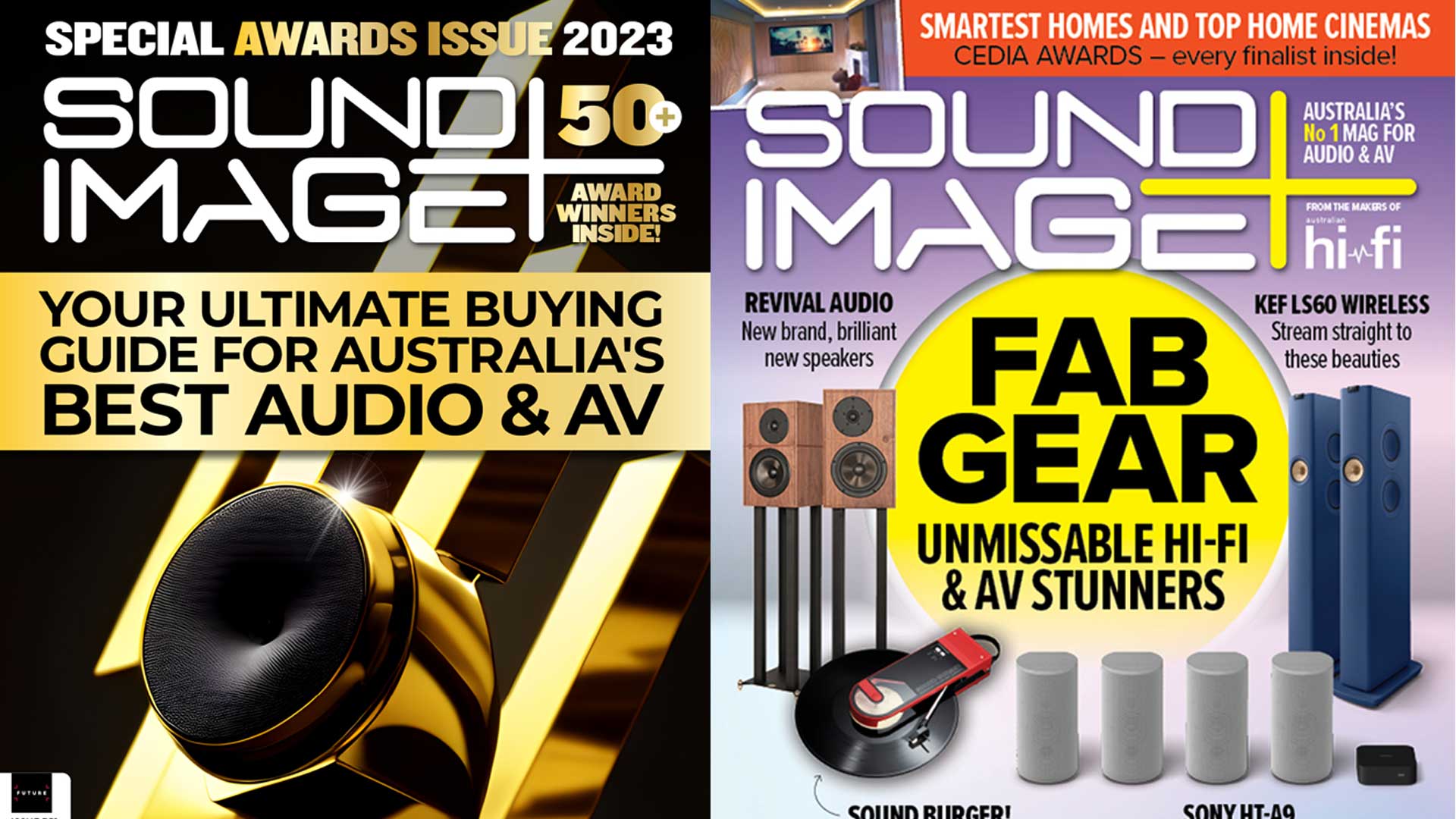
This review originally appeared in Sound+Image magazine, Australian sister publication to What Hi-Fi?. Click here for more information on Sound+Image, including digital editions and details on how you can subscribe.
So Rega aims for the lightest possible chassis, with the stiffest possible brace – on this current Planar 3 that is the two-layer brace (3mm phenolic bottom and metallised-skin phenolic top) shown above which spans between tonearm mount to the main central bearing as a structurally sound “stressed beam”, bringing that required rigidity to the structure.
Note the phenolic resin there: a Rega not-so-secret ingredient (the material has a history back to the likes of Bakelite). The higher the turntable, the more phenolic Gandy is likely to pour into it. Perhaps he might one day be memorialised in phenolic resin, like Han Solo in carbonite.
That Rega story book is surprisingly vague on the order of subsequent Planar turntable releases, though an online product history puts the original Planar in April 1975, followed by the Planar 3 (and the Acos-derived R200 tonearm) a year later in 1976, and then the Planar 2 in 1977.
We do know that the Planar 3 was no instant hit; we are told “it sold like cold cakes”, perhaps because it was still fairly radical in its time. But after its slow start, the Planar 3 found increasing acceptance and then acclaim. Today it is considered a classic that has never stopped bringing a hi-fi level of vinyl playback to the world, and which has never stopped evolving. Ongoing revisions included the arrival in 1983 of the almost equally-legendary RB300 tonearm, the first tonearm to be manufactured at the Rega factory.
Half a century on, we have this commemorative 50th anniversary Planar 3. And without too much of a spoiler, we’ll tell you now – it sounds so good.
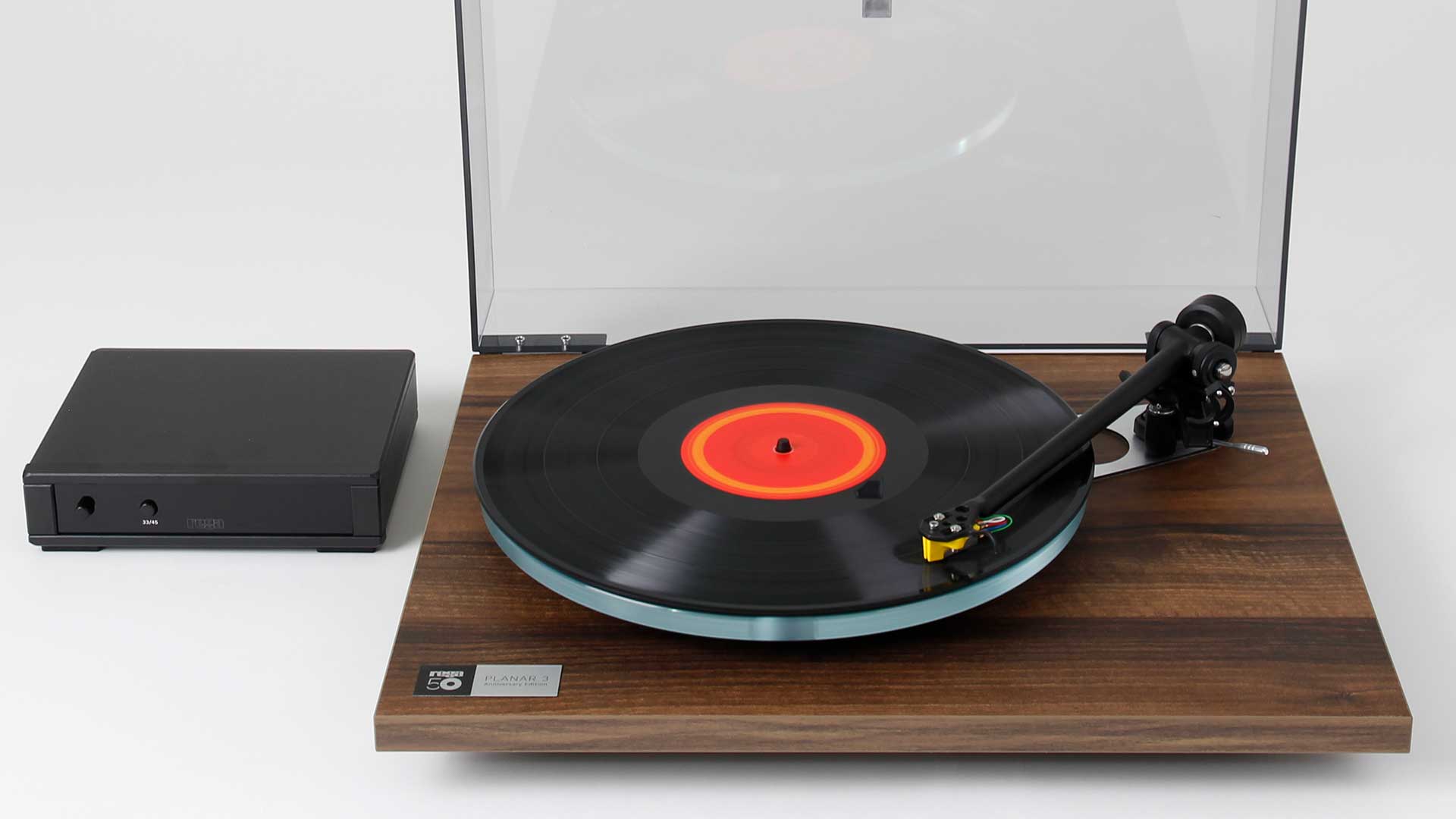
Build & facilities
Because of the Rega philosophy on weight, the plinth looks (and is) relatively lightweight; we’ve seen turntables half the price that look superficially more impressive in that regard. Yet the new walnut laminate effect in which the anniversary deck comes exclusively (the standard Planar 3 is gloss white, black or red) is beautifully finished, grained and woody, badged in aluminium (as is the lid) at lower left to celebrate the occasion, while the laminate masks the internal “particulate core with a highly rigid phenolic resin skin”. (There it is again.)
We spent a little while looking for the power switch, but there is none on the deck, because one of the key upgrades for the 50th anniversary version is a Neo PSU Mk2, an offboard power supply hand-tuned to the Planar 3’s 24V motor. Rega says the PSU should be positioned as far from the turntable as the cables will allow (which is more than a metre).
The arm is Rega’s own RB330, featuring Rega's low-mass aluminium tonearm tube and redesigned vertical bearing housing, and the cartridge is also Rega’s own, the handmade Rega Exact, a moving-magnet design, the higher of two options on the standard Planar 3.
Another upgrade sees the usual Advanced EBLT drive belt switched out for the Reference version, not that you’ll see it much because you won’t need to move it to change speeds, as you do on the standard Planar 3, removing the platter to move the belt to the other pulley. Here the offboard power supply does the speed change electronically, a significant convenience lift for singles fans!
While the price difference over the standard versions will vary by market, the Australian distributor Synergy points out that the Planar 3 with Exact currently retails for AU$1799, while the Anniversary Edition includes upgrades valued at AU$624 RRP for just AU$100 more, as well as giving you a little piece of Rega history. The Anniversary turntable will arrive Down Under in September.
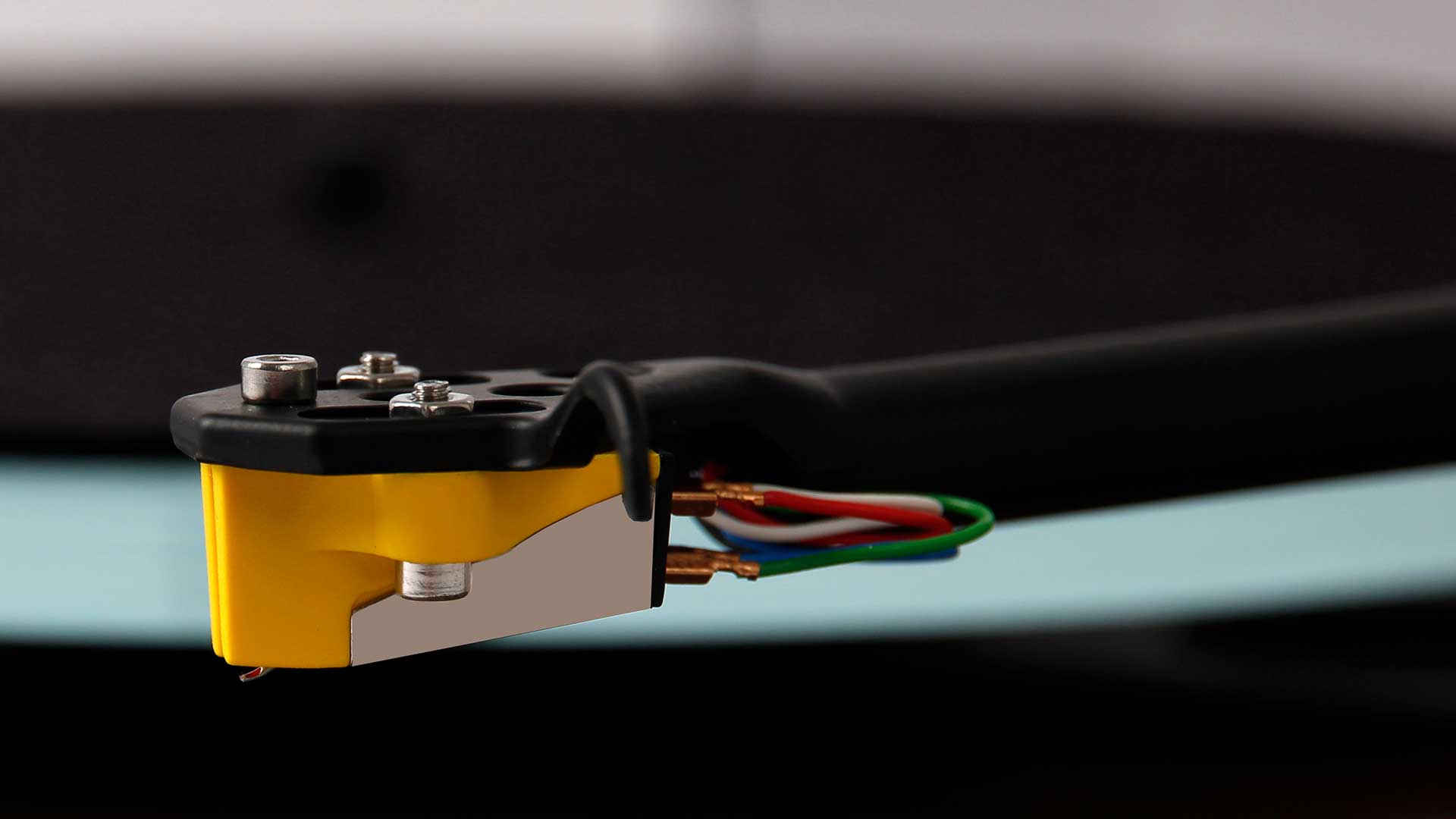
Listening sessions

Tonearm: RB330
Platter: 12mm glass polished edge
Outputs: flying phono leads, no Earth
Power: Neo PSU Mk2 via Mini DIN
Dimensions: 447 x 117 x 360mm (lid closed)
Weight: 6.0kg
Neo PSU dimensions: 180 x 150 x 50 mm
It’s easy to nail together, the Planar 3, since the cartridge is prefitted, so you need only lower the glass platter and felt mat onto the spindle, put the counterweight on the end of the arm and bring it up until the arm is floating just above an LP surface, then add the tracking weight to the little dial and again to the antiskate slider (where you’re hard-pressed to precisely hit the required 1.75g position since the space between 1 and 2 is mere millimetres in length). There’s not even a belt to spin into place, as it’s attached at the factory.
Plug up all the cables, including the mini-DIN cable to the offboard PSU, which plugs into a deeply recessed socket behind the back of the turntable, quite hard to line up, so do this early on, before final levelling. The Neo PSU allows fine speed adjustment, but our Sound+Image strobe card showed it already smack on the money.
All done, we began by digging out an album of great import in its day: Marillion’s ‘Script For A Jester’s Tear’, herald of the 80s’ neo-progressive moment, such as it was. This album has recently been remixed, with a result which puts the original digital release to shame. Surprise, then, to find the vinyl original sounding at least as good as the remixes, perhaps because that’s how we knew it first, but at least partly thanks to the Planar 3’s ongoing train of sonic revelations. For example, in surely 1000 listens we’d never noticed the engineer ducking the whole volume in the middle of the title track just after a stretch of Steve Rothery’s guitar had peaked rather painfully; here the adjustment was obvious in a sudden reduction of energy just before the first main drop. Such clarity and energy; we played both sides before moving on.
The cartridge proved capable of tracking even quite damaged albums; a bargain-bin copy of 10CC’s ‘How Dare You’ had visible marks and audible surface noise but the Planar still delivered these complex songs with full clarity, whether the building groove of the title instrumental opener or the spectacular dreamscapes, stacked harmonies and panned strumming of the magnificent I’m Mandy Fly Me, a song so good we lifted the arm and played it twice. The arm lift is relatively undamped and lifts the stylus only a few millimetres, an interesting comparison with a recent deck which took a full six seconds from lowering the lever to the needle hitting the groove. The drop here is safely damped, but the descent takes less than a second.
Happily our copy of 10CC’s ‘Deceptive Bends’ is immaculate, so higher and higher we turned the volume, remembering to drop the cover over the turntable to provide a little acoustic isolation as well as dust protection. This cover has no bumpers to stop it touching the plinth, a good thing, as such bumpers create space all round and seriously reduce both types of protection.
Oh, ‘Deceptive Bends’, what an album. The kick drum was deep and tight on Good Morning Judge, the duelling guitars bright and incisive, the bass guitar full throughout its range. More massed harmonies on the divine The Things We Do For Love, Eric Stewart’s lead perfectly rendered in the centre. The extended closer on side two, Feel The Benefit, brought the first genuine rapture. CDs just don’t sound like this; the Planar 3 was providing a full-blown advert for the joys of vinyl.
We jumped forward to last year’s most played album, a deep blue vinyl copy of Alex The Astronaut’s ‘How To Grow A Sunflower Underwater’. Tough opener here: Growing Up is incredibly dense and gives hi-fi in general a hard time in terms of revealing the details within the rising mush, but the Planar 3 did as good as job as we’ve heard, and on the simpler subsequent tracks the vinyl presentation gave the tunes a substance they lack digitally: Octopus far fatter, its bubbles more realistically bubbly, its flow more organic.
And there we go, talking about the music, rather than the turntable. That’s always a very good sign. This is a turntable which takes you to the music.
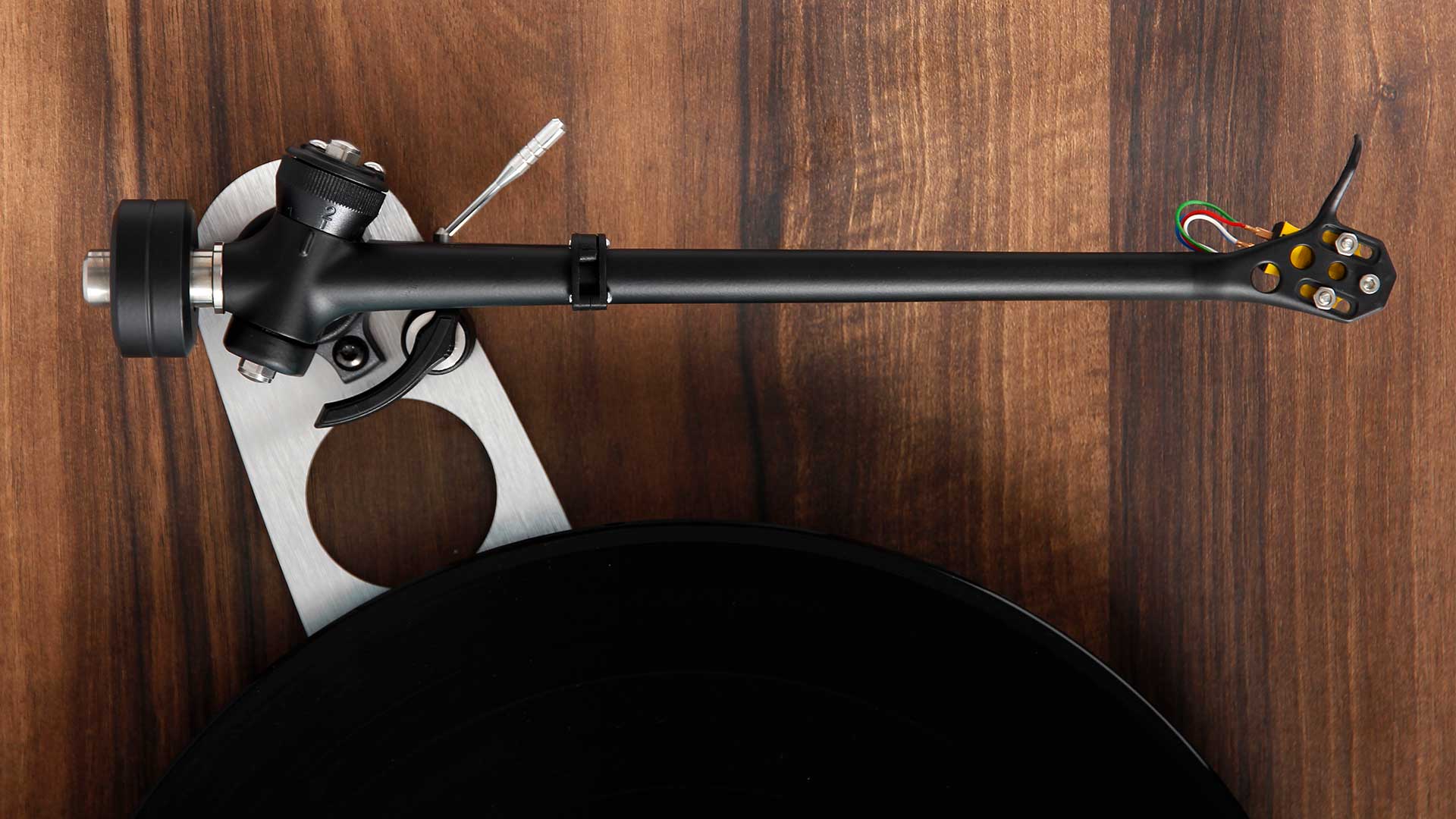
It took us all through the Special Airplay Album (1-LP) of ‘Extracts From Jeff Wayne’s Musical Version of The War Of The Worlds’ (no offers please, not selling), which simply blasted from our speakers, their twin horns and 12-inch woofers on fire with the ear-bending synths and ‘Ullaaas’ being wrenched from these well-played grooves, with the richness also serving the softer Forever Autumn and dynamic Spirit of Man (one of Phil Lynott's strangest but greatest moments).
Presumably Rega’s higher turntables would sound even better – indeed we’ve had some of them on the same Quadraspire rack, playing through the same system. Tell you what though: listening to this vinyl masterpiece playing on the hi-fi masterpiece which is the Planar 3, we didn’t want for more.
(Those who feel like us about this album should rush to investigate the five-hour full-text musical version Jeff Wayne did in 2018; it’s on available on Audible Australia right here.)
Having decided this album was perhaps the best ever, we decided within 15 minutes that the last side of Kate Bush’s ‘The Red Shoes’ (‘Remastered in Vinyl’ series) was actually the best album ever and You’re The One certainly the most devastating Kate Bush track ever. And then we went to pick a Philip Glass album, perhaps ‘The Photographer', an LP just reacquired at the recent Australian Hi-Fi Show, but then no, of course ‘1000 Airplanes On The Roof’ is the best Glass LP ever, and on this performance, among the best vinyl performances we’ve ever heard; this was exceptional, the Planar 3 digging deep and delivering massive scale for this unique arrangement of deep pounding synth, brass and wind.
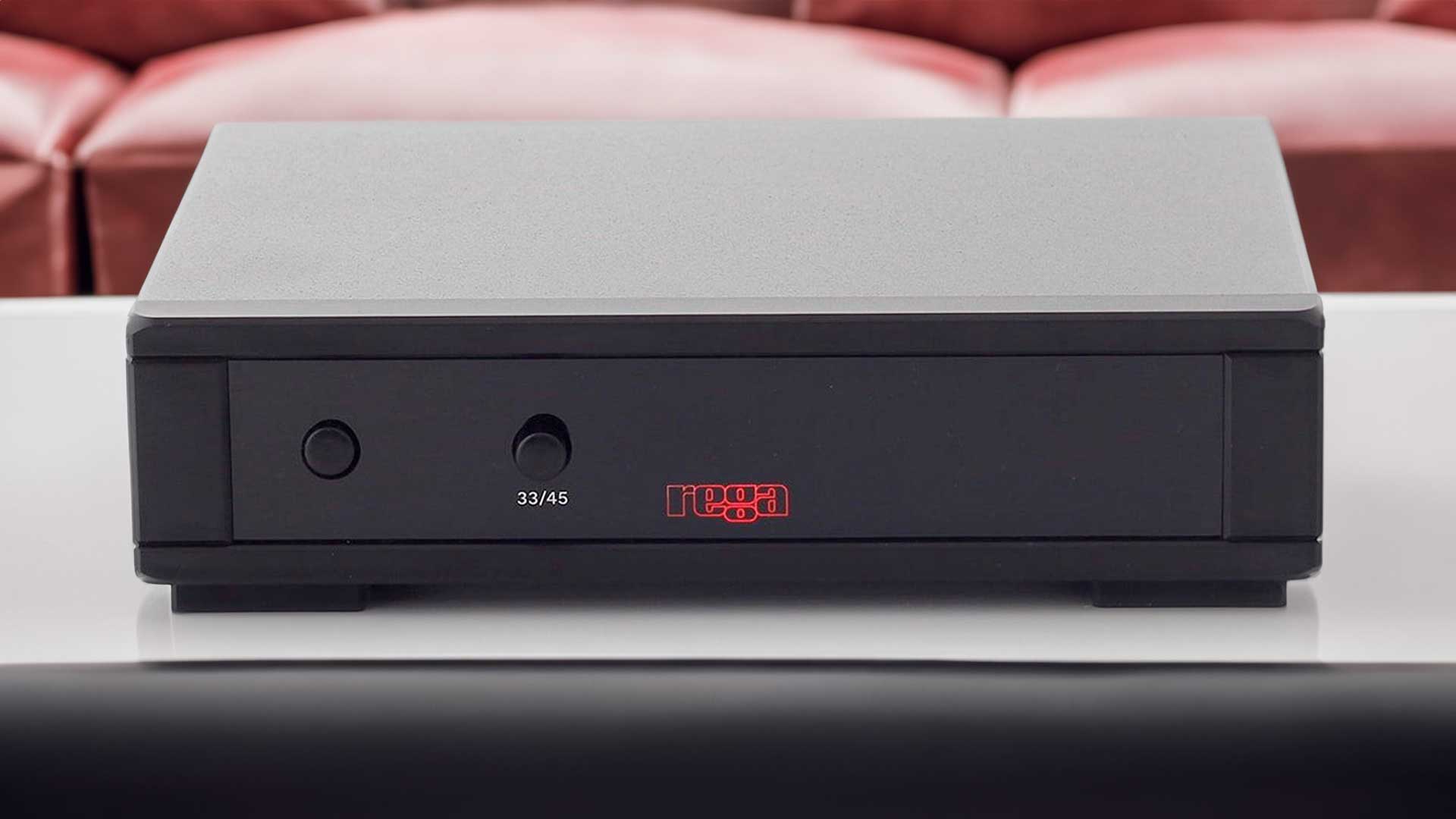
Everything was working so well that we started picking at random – Roy Orbison’s 1989 ‘Mystery Girl’ LP, led by the Jeff Lynne-produced opener You Got It, punchy as, but this is a mix of productions, including T. Bone Burnett, Heartbreaker Mike Campbell, and even Bono, heaven help us. They all worked in their turn, and Burnett’s piece perhaps most of all, once it got going: another revelation.
Random again: 'A Zed & Two Noughts', Michael Nyman soundtrack to a Peter Greenaway movie about… no, you really don’t want to know. But from Angelfish Decay to Swan Rot the Planar delivered the music’s required sense of incessant madness, every slash of strings achieving maximum drama from this turntable, to which we were rapidly becoming attached.
The one LP that didn’t perform was the recent 'Sgt Pepper' remix on vinyl. Sounded rather compressed and dull; we lifted the needle even before Lucy got a chance to shine. Too much more in the racks to enjoy.
Finally I had to remind myself that, of course, ELO’s ‘A New World Record’ is actually the best album in the world ever, yes even better than Zeppelin and Floyd and Kate: perhaps not the very best production, but the best album – Tightrope, Telephone Line, Rockaria, Mission, c’mon! And Livin’ Thing waiting on the flipside. All sounding here rich and full, as it always was on vinyl, not digital. Even Jeff doesn’t like the digital; he re-recorded chunks of it, pretty fruitlessly to be honest: Jeff, you should have just transcribed it off a Döhmann turntable or something. It’s the vinyl, it's the RIAA curve. It’s, you know, the vibe.
Perhaps you don’t agree about my choices of best albums in the world. The point is that the 50th Anniversary Rega Planar 3 was making album after album sound like the best album in the world. We really couldn’t stop. Album, album, album, side after side after side. Next morning, unracked records everywhere. That plan for a night out? Cancel it. We’re staying in with our records.
We could go on, and indeed we did. But what didn’t we like? The belt would let out a little squeal when starting up, but the more albums we played, the less it squealed. The thin hinges for the lid slipped out several times while lifting it. But everything else, even the little things, are perfect. The finger lift on the cartridge head is wide and sculptured. The LP extends just beyond the platter so it’s easy to lift off without stopping the platter spinning. The light on the PSU burns red for albums but very ‘Rega green’ for singles, so you’re never likely to embarrass yourself by doing a John Peel at a dinner party.
It’s probably no surprise everything works so well; if there was anything wrong, well, Rega’s had 47 years to fix it. Legend.
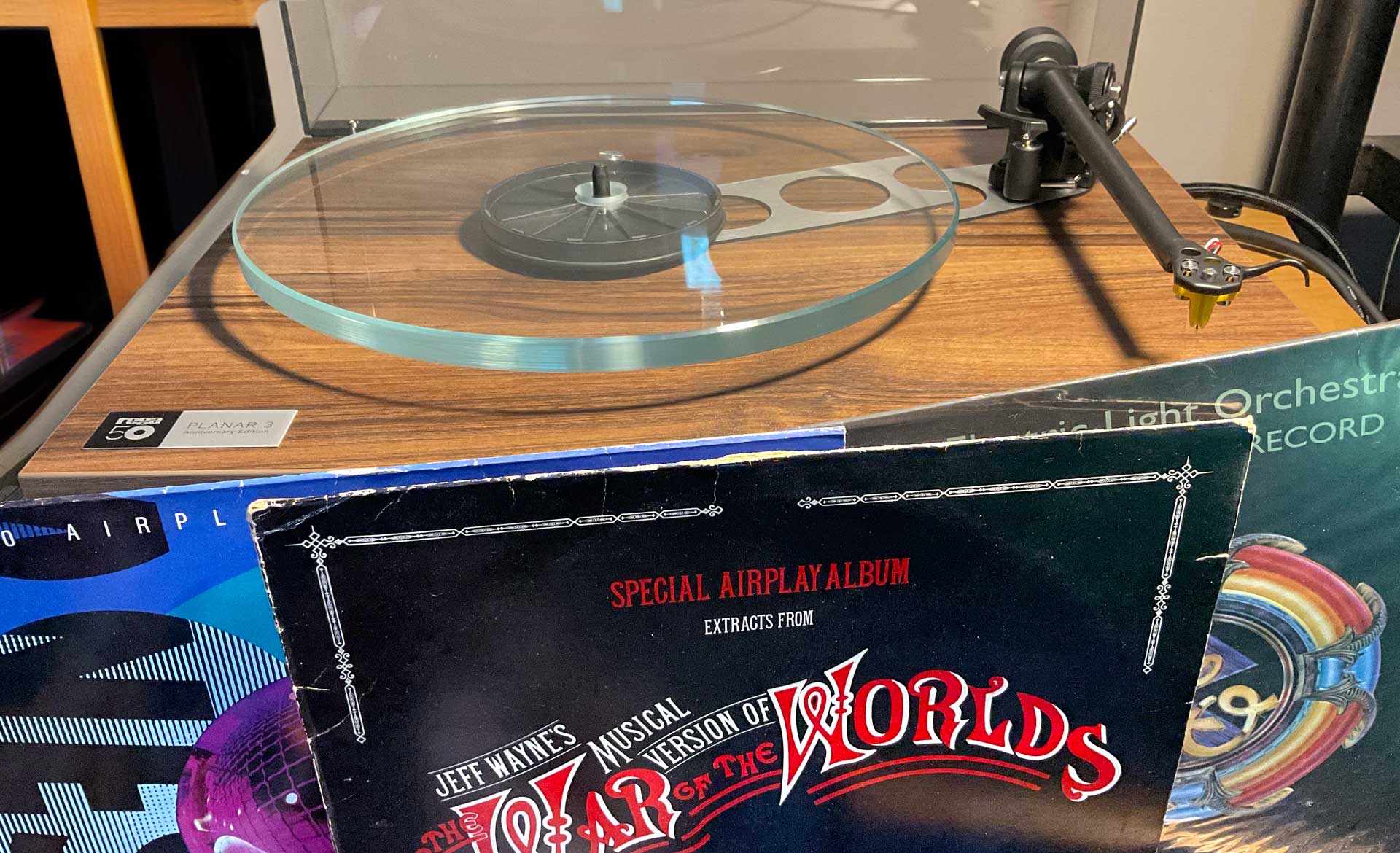
Verdict
It’s a no brainer, the 50th anniversary Rega Planar 3. Useful upgrades for not much more, simply wonderful vinyl replay in every regard – full frequency response, detailed resolution and soundstaging, kicking kick drums, delicacy when required.
If you want a real turntable, a classic taken to a new level, look no further. But look fairly quickly: Rega is saying the 50th Anniversary edition will be available during 2023, but no later. So perhaps happy Christmas to you, as well as happy birthday to Rega.

Jez is the Editor of Sound+Image magazine, having inhabited that role since 2006, more or less a lustrum after departing his UK homeland to adopt an additional nationality under the more favourable climes and skies of Australia. Prior to his desertion he was Editor of the UK's Stuff magazine, and before that Editor of What Hi-Fi? magazine, and before that of the erstwhile Audiophile magazine and of Electronics Today International. He makes music as well as enjoying it, is alarmingly wedded to the notion that Led Zeppelin remains the highest point of rock'n'roll yet attained, though remains willing to assess modern pretenders. He lives in a modest shack on Sydney's Northern Beaches with his Canadian wife Deanna, a rescue greyhound called Jewels, and an assortment of changing wildlife under care. If you're seeking his articles by clicking this profile, you'll see far more of them by switching to the Australian version of WHF.
